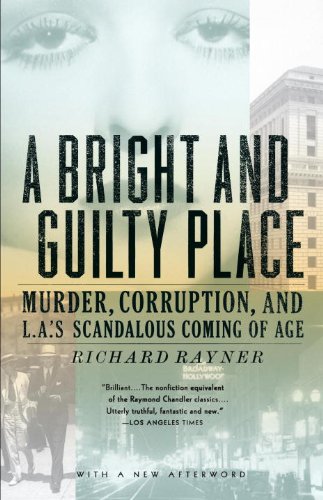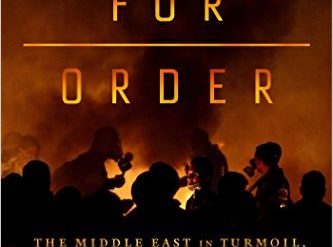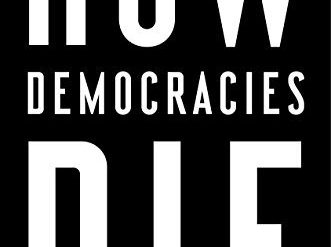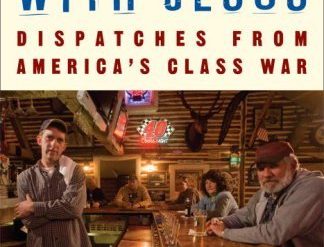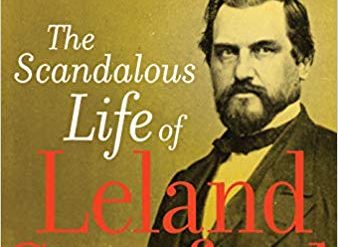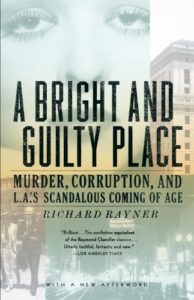
Estimated reading time: 3 minutes
If this book had been a straightforward narrative account of L.A.’s history from the end of the First World War through the Great Depression, it could have been brilliant. The two central characters, in all their indulgences and idiosyncrasies, beautifully embody the tale of crime and corruption, fame and its misfortunes, all under Hollywood’s bright lights.
But A Bright and Guilty Place is two books, really. One is that account from an experienced Los Angeles journalist, a tensely written history that deftly conveys a distant reality through the intersecting paths of two men, one an investigator-turned-pulp fiction writer, the other a promising attorney seduced by the glitter of Los Angeles. The other is a work of literary analysis, with the author dissecting the works of Raymond Chandler, Erle Stanley Gardner, and other lesser-known L.A. writers who established the conventions of the “hard-boiled detective novel” — and attempting to add depth and insight to the history by citing their observations.
A Bright and Guilty Place: Murder, Corruption, and L.A.’s Scandalous Coming-of-Age by Richard Rayner (2009) 338 pages ★★★☆☆
Under Hollywood’s bright lights
The story at the center of A Bright and Guilty Place is that of Leslie White (the investigator) and Dave Clark (the lawyer), and it focuses on the two-year period in which they collaborated in the office of the Los Angeles District Attorney on a series of celebrated trials. The characters for whom they worked — as well as the ones they brought to justice — were straight out of Chinatown, which the author seems to regard as a faithful portrait of official L.A. in the 1920s and 1930s.
“The System” ruled. At its helm was a crime boss, Charlie Crawford, who never looked the part, and rarely acted it, either. Charlie called the shots, with the mayor, the police chief, the D.A., and practically everyone else who mattered in official L.A. doing his bidding — right up until someone shot and killed him with a .38 revolver. But who killed Charlie Crawford was never much of a mystery. The man who did it was none other than celebrated trial attorney Dave Clark. Therein lies the tale.
For related reading
You may enjoy browsing through 20 top nonfiction books about history.
If you enjoy reading history in fictional form, check out 20 most enlightening historical novels.
For more good books on the history of the US, see Top 20 popular books for understanding American history.
And if you’re looking for a broader view of human history, check out New perspectives on world history.
And you can always find my most popular reviews, and the most recent ones, on the Home Page.

